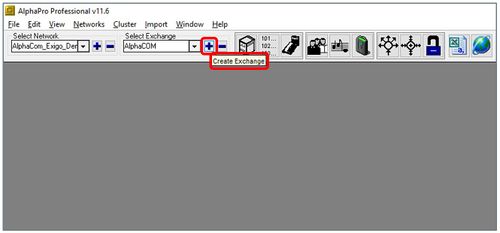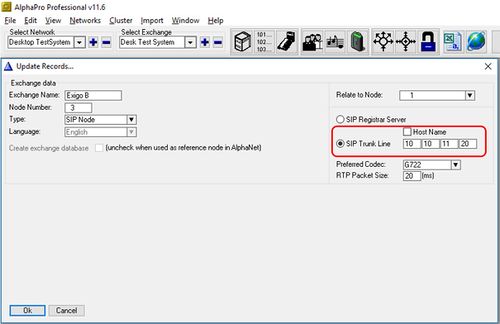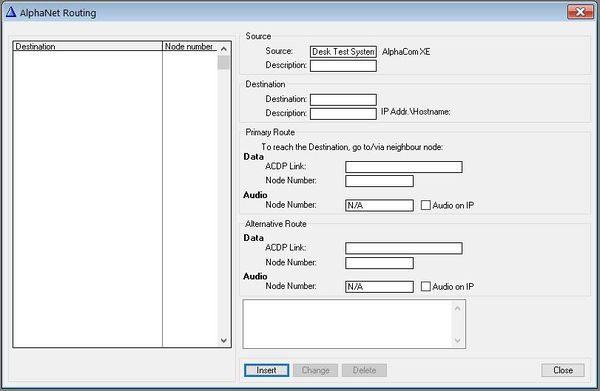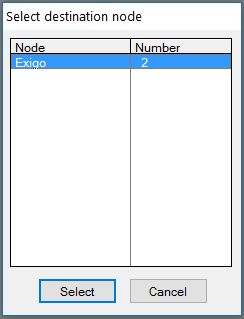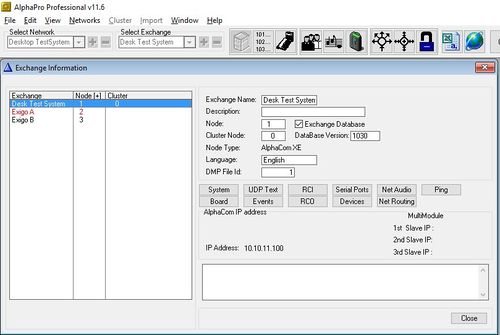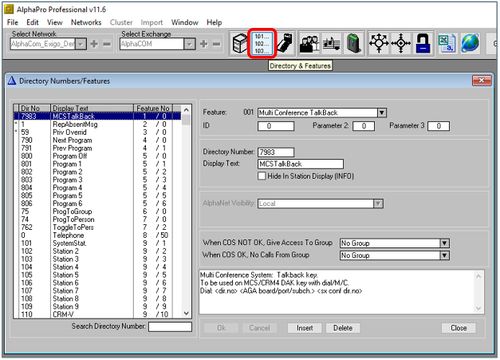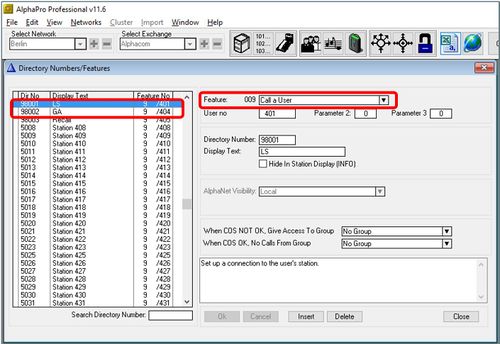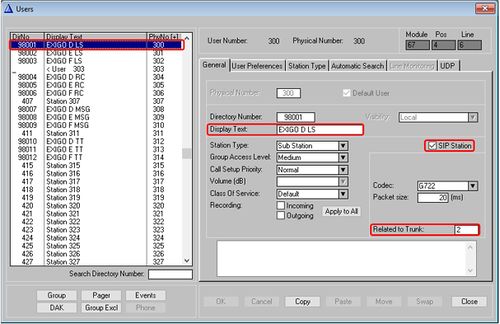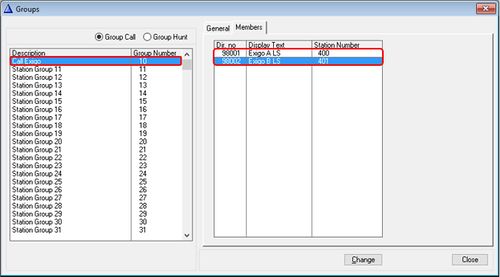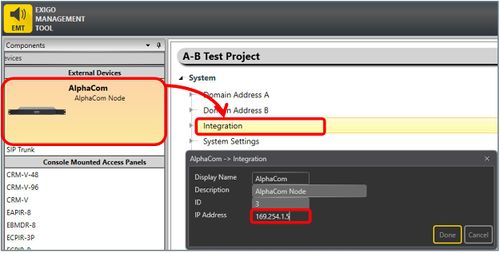Difference between revisions of "Redundant AlphaCom integration"
(→Step 1. Add the AlphaCom node) |
|||
| Line 106: | Line 106: | ||
[[File:Alphacom integration 10.JPG|thumb|left|500px|EMT - Add the AlphaCom node]] | [[File:Alphacom integration 10.JPG|thumb|left|500px|EMT - Add the AlphaCom node]] | ||
<br style="clear:both;" /> | <br style="clear:both;" /> | ||
| − | Type in the IP address of the AlphaCom. | + | Type in the '''IP address''' of the AlphaCom. |
== Availability == | == Availability == | ||
Revision as of 13:23, 2 February 2017
This article explains how to setup and configure redundant AlphaCom integration on an Exigo A-B system.
The solution may also be used for Exigo system with hot-standby controller.
Redundant AlphaCom integration makes it possible for the AlphaCom to call both Exigo Controllers simultaneously.
If one of the Exigo Controllers fails you will still have integration between AlphaCom and the Exigo system.
Contents
Configuration Overview
Exigo Management Tool (EMT) is used for setting up the integration from Exigo.
AlphaPro is used for setting up the integration from AlphaCom.
From Exigo there is two types of actions defined:
- Action Calls - from AlphaCom to Exigo.
- AlphaCom features - from Exigo to AlphaCom.
Exigo will use numbers from 98001 to 98099 to start activities in Exigo on incoming activities.
Outgoing from Exigo can define any number.
AlphaPro Configuration
Configuration on the AlphaCom with redundant call to Exigo contains three steps:
- Define and map IP addresses to the two Exigo Nodes (Controller A and Controller B).
- Defining Directory Numbers.
- Make a Group Call that calls both controllers.
Step 1. Define and map IP addresses to the first Exigo Node (Controller A)
The following steps needs to be repeated for Controller B.
Select Create Exchange to create the first Exigo SIP node in your AlphaCom system:
Set the IP adress for the first Exigo PSC (Controller A) as the SIP Trunk Line:
Set up Net Routing:
Go to Exchange & System -> Net Routing:
Select Insert:
Select the Exigo node:
Select ACDP Link: SIP Link (31)
Press OK.
The steps above must then be repeated for Controller B.
After adding both controllers you should now have two Exigo nodes:
Step 2. Defining Directory Numbers
In order to achieve redundancy the AlphaCom needs to call both controllers at the same time.
The next step is to add the directory numbers which are used in Exigo. These numbers are from 98001 to 98099:
Select Directory and Features:
Here you need to add the number of directory numbers/Action Calls you need.
For redundancy you need to add minimum two numbers (for example 98001 and 98002).
98001 will then call Controller A, and 98002 will call Controller B.
Add a directory number 98001 with feature number 9 (Call a User).
This will give you a number that are automatically in All Call 84, and can also be added to groups.
Give the Directory Number a descriptive text in Display Text.
The User will look like this:
Check the SIP Station box.
The Related to Trunk must be set to the correct Exigo SIP Trunk (one for each Exigo Controller).
For redundancy you need two numbers.
For example will 98001 call Controller A (node 2), and 98002 Controller B (node 3):
Step 3. Group Call
In order to achieve redundancy AlphaCom needs to call both Exigo Controllers at the same time.
This is done by doing a Group Call from AlphaCom.
Go to Groups -> Local Groups.
Edit (change) an available group and include the two member (for example 98001 and 98002):
This Group Call will then make sure that AlphaCom call both Exigo Controllers simultaneously.
EMT Configuration
There is 3 main configurations that needs to be done in EMT:
- The AlphaCom node needs to be added.
- Actions Calls and
- AlphaCom features also needs to be configured.
Step 1. Add the AlphaCom node
First step is to add the AlphaCom node to the system.
In Components view expand the External Devices.
Drag the AlphaCom to the System -> Integration:
Type in the IP address of the AlphaCom.
Availability
This feature is available from Exigo 1.3.2.7 and newer.


